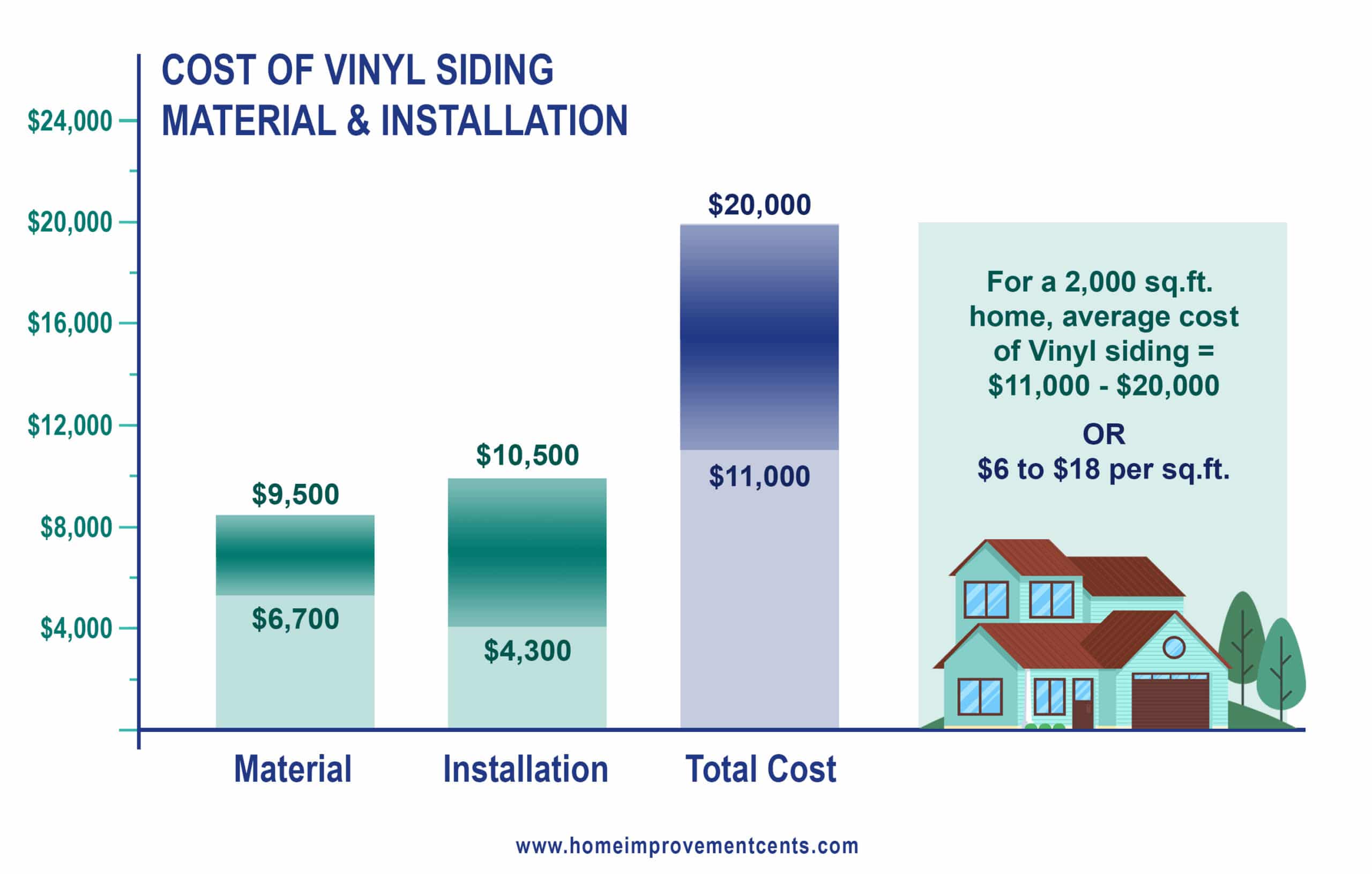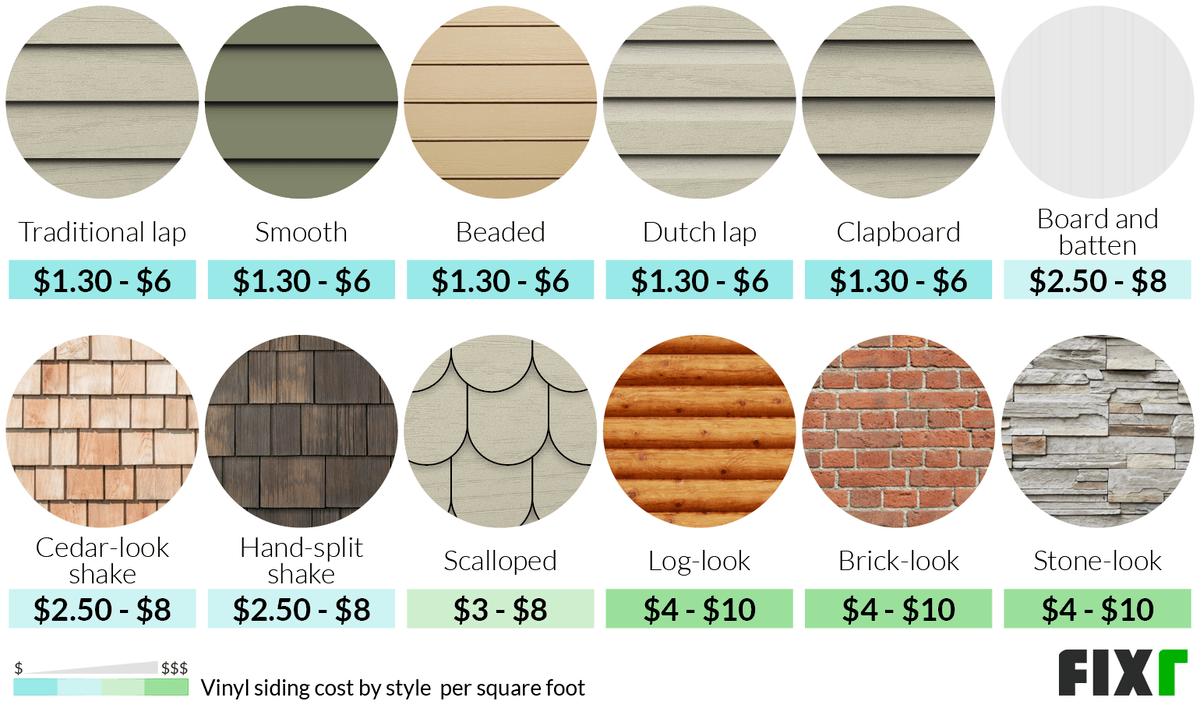The Ultimate Guide to the Average Cost of Siding a House with Vinyl Siding
As we delve into the world of vinyl siding installation costs, it's essential to understand the key factors that influence expenses. From materials required to geographic variations, this comprehensive guide covers everything you need to know about the average cost to side a house with vinyl siding.
Factors influencing the cost of vinyl siding installation
When considering the cost of vinyl siding installation, there are several key factors that can influence the overall expense.
Materials needed for vinyl siding installation
- Vinyl siding panels
- Trim pieces
- J-channels
- F-channel
- Corner posts
- Nails/screws
- House wrap
- Insulation
Impact of house size on total cost
- Larger houses require more materials, leading to higher costs.
- More square footage means more labor hours, which can increase the overall expense.
Complexity of house design
- Houses with intricate designs, angles, or multiple stories may require more time and skill to install the vinyl siding properly.
- This complexity can lead to higher labor costs and potentially the need for specialized tools or techniques.
Role of labor costs
- Labor costs play a significant role in determining the total expense of vinyl siding installation.
- Skilled laborers may charge more for their expertise, especially for challenging projects.
- The number of workers needed and the time required for installation can also impact labor costs.
Average cost breakdown of vinyl siding installation
When considering the average cost breakdown of vinyl siding installation, it's important to take into account various factors that contribute to the overall expense. This includes costs for materials, labor, and other associated expenses that may arise during the installation process.
Materials, Labor, and Other Expenses
Here is a breakdown of the average costs associated with vinyl siding installation:
| Cost Category | Average Cost |
|---|---|
| Materials | $1.50
|
| Labor | $2.00
|
| Other Expenses | Varies (Permit fees, disposal of old siding, etc.) |
Additional Costs to Consider
- Cost of additional materials such as insulation or trim pieces
- Cost of any necessary repairs or preparation work before installation
- Potential permit fees or disposal costs for old siding
DIY vs Professional Installation
While some homeowners may consider DIY installation to save on labor costs, it's essential to weigh the pros and cons. DIY installation can potentially save money upfront, but hiring professionals ensures proper installation and may save money in the long run by avoiding costly mistakes.
Tips for Cost Savings
- Compare quotes from multiple contractors to ensure competitive pricing
- Consider off-season installation for potential discounts
- Opt for mid-grade materials that offer a balance of quality and cost
- Regular maintenance and cleaning can extend the lifespan of vinyl siding, reducing the need for premature replacement
Types of vinyl siding and their cost differences
When it comes to choosing vinyl siding for your home, there are various types available in the market, each with its own cost and quality considerations. Understanding the differences between these types can help homeowners make informed decisions that align with their budget and long-term maintenance goals.
Standard Vinyl Siding
Standard vinyl siding is the most common type available and is often the most budget-friendly option. It typically comes in a variety of colors and styles, making it versatile for different home designs. While standard vinyl siding may be more affordable upfront, it may require more frequent maintenance and replacement over time, potentially increasing long-term costs.
Premium Vinyl Siding
Premium vinyl siding offers enhanced durability and resistance to fading, warping, and cracking compared to standard vinyl siding. While it comes at a higher cost initially, the reduced maintenance requirements and longer lifespan can result in cost savings in the long run.
Premium vinyl siding also tends to have a more extensive range of colors and textures, allowing for a more customized look for your home.
Insulated Vinyl Siding
Insulated vinyl siding provides additional energy efficiency benefits by helping to regulate indoor temperatures and reduce heating and cooling costs. While the upfront cost of insulated vinyl siding may be higher than standard or premium options, the potential savings on energy bills can offset this initial investment over time.
Additionally, the added insulation can improve the overall comfort of your home.
Vertical Vinyl Siding
Vertical vinyl siding offers a unique aesthetic appeal and can be a suitable choice for modern or contemporary home designs. While it may not be as common as horizontal siding, vertical vinyl siding can provide a fresh and stylish look to your home.
The cost of vertical vinyl siding may vary depending on the manufacturer and specific design features.
Cost Comparison and Considerations
When comparing the cost of different types of vinyl siding, it's essential to consider not only the upfront expenses but also the long-term maintenance and energy efficiency benefits. Premium and insulated vinyl siding may have higher initial costs but can offer savings in maintenance and energy bills over time.
Standard vinyl siding, while more affordable upfront, may require more frequent repairs and replacements, potentially increasing overall costs in the long run. Homeowners should weigh these factors carefully to choose the best option for their budget and home improvement goals.
Geographic variations in vinyl siding installation costs

When it comes to the cost of siding a house with vinyl, geographic location plays a significant role in determining the final price. Different regions across the country have varying factors that can influence the overall cost of vinyl siding installation.
Understanding these geographic differences can help homeowners navigate through the cost discrepancies and make informed decisions.
Regions with Higher Costs
In general, urban areas and coastal regions tend to have higher vinyl siding installation costs compared to rural or inland areas. This is primarily due to higher labor costs, stricter building codes, and increased demand for construction services in densely populated regions.
For example, cities like New York City, Los Angeles, and San Francisco typically have higher vinyl siding installation costs compared to smaller towns in the Midwest.
Regions with Lower Costs
On the other hand, rural areas and regions with lower population densities often have lower vinyl siding installation costs. This can be attributed to lower labor costs, less stringent building regulations, and decreased competition among contractors. Areas in the Midwest, South, and parts of the Midwest generally have lower vinyl siding installation costs compared to major metropolitan areas.
Navigating Cost Differences
To navigate through the geographic cost differences in vinyl siding installation, homeowners should consider obtaining multiple quotes from local contractors in their area. By comparing estimates from different professionals, homeowners can get a better understanding of the average cost in their specific region.
Additionally, researching local building codes and regulations can help homeowners anticipate any additional costs that may arise during the installation process.
Last Word

In conclusion, determining the average cost of siding a house with vinyl siding involves various factors that homeowners need to consider. By understanding these elements and exploring cost-saving strategies, you can make informed decisions and enhance the value of your property.